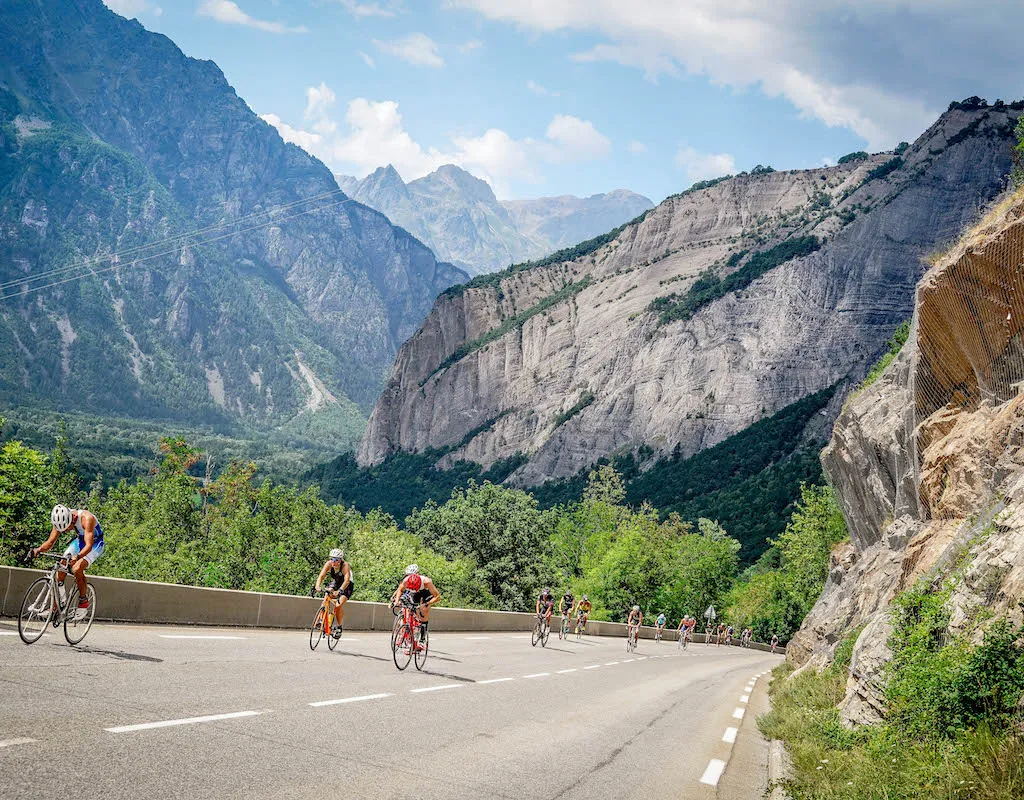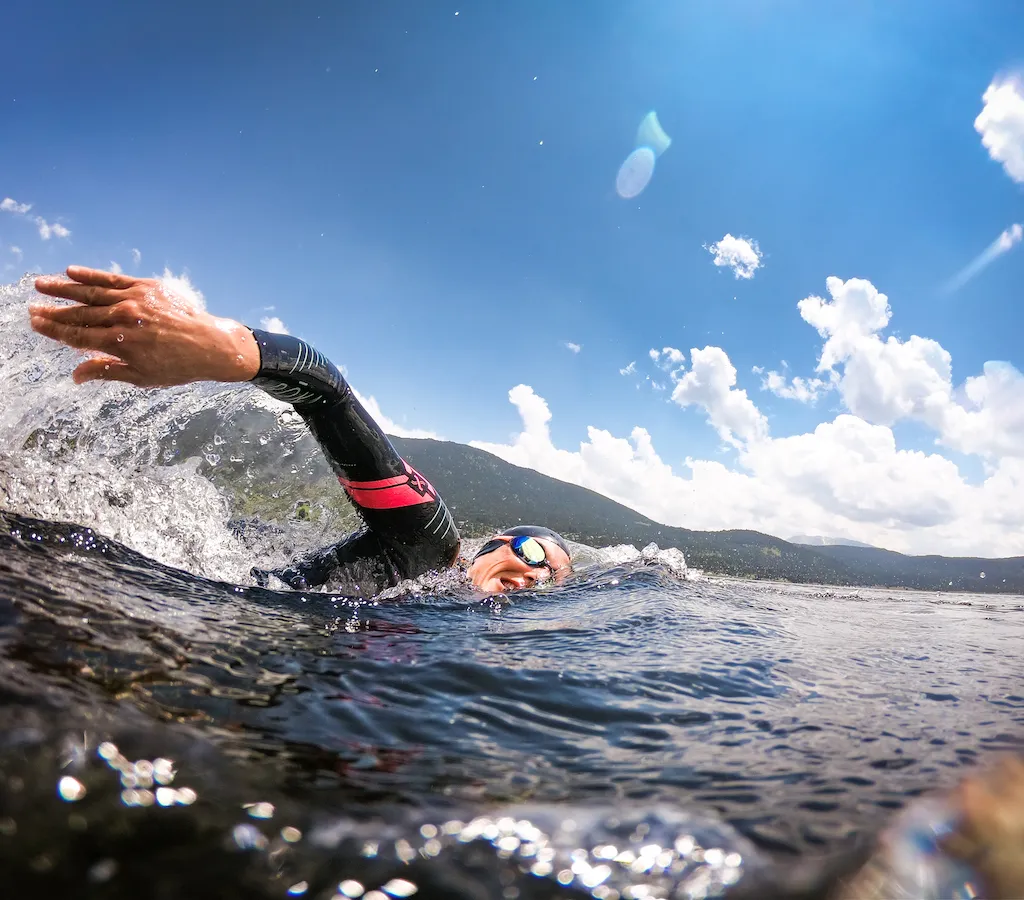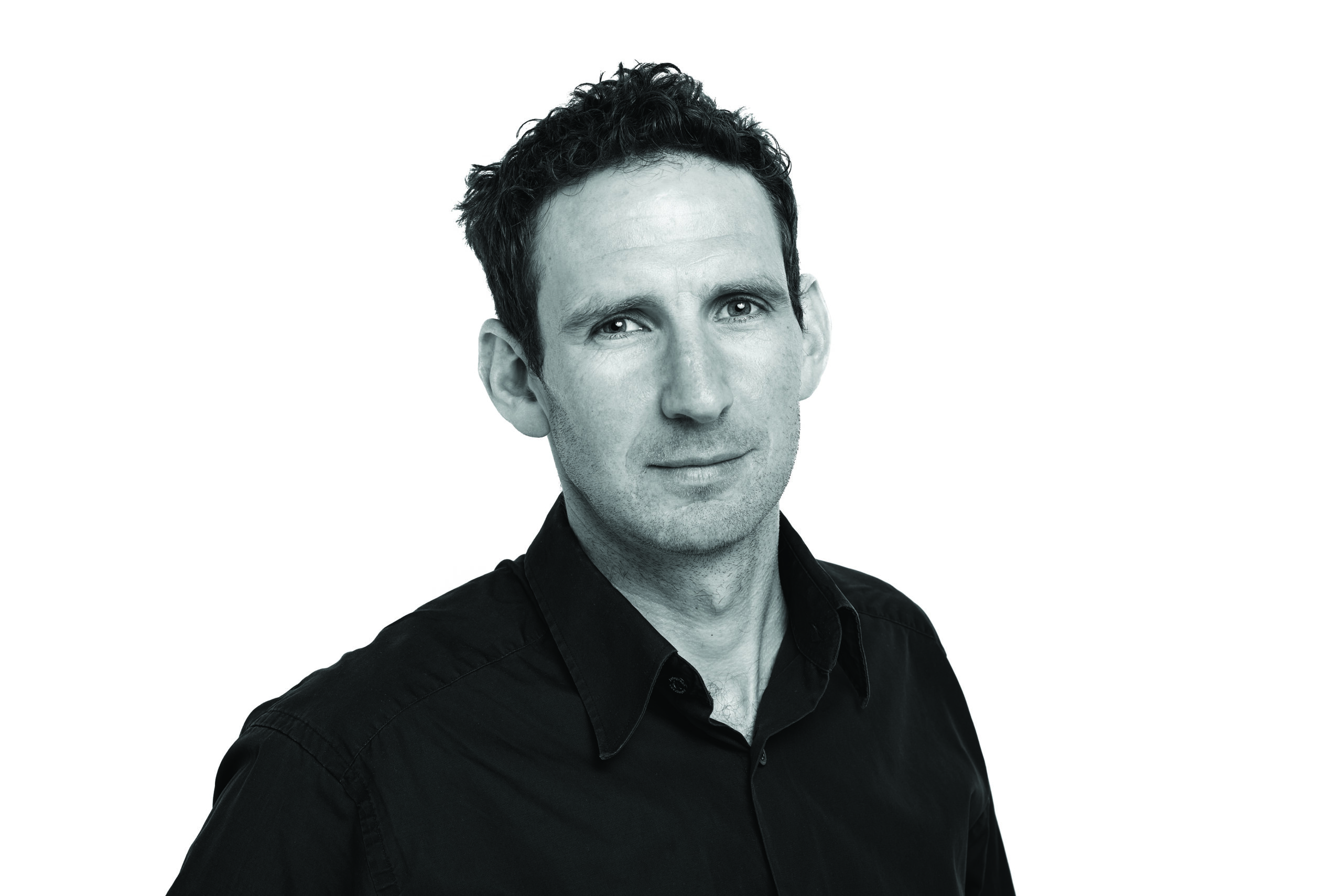The 2023 men’s and women’s Ironman World Championships may have been split between Nice (10 September) and Hawaii (14 October), but both genders remained linked by the top athletes heading to altitude in the build-up.
The 2022 champ Gustav Iden often heads to Sierra Nevada, though mixed things up in Morocco in January, while 2022 women’s victor Chelsea Sodaro headed to the luxury resort of St Moritz earlier in 2023 in search of peak performance.
But how much of a boost are the likes of Iden and Sodaro seeking when hitting the heights? And what exactly is happening beneath the physiological bonnet that’s so goddam alluring to endurance athletes?
Breathe easy and find out…
What altitude is best for altitude training?
The last time 220 tackled altitude training we led with the suggestive title ‘Two-mile high club’. Forgive the artistic licence, but at that height of around 3,200m you cannot go hard enough for long enough – you need to lower your sights by at least 500m.
At least that’s the view of James Barber, lead performance specialist from The Altitude Centre in London.
“We set the chamber to 2,700m,” he says. “We believe that’s the sweet spot to receive the benefits of training at altitude without impairing the quality. If we took it to an extreme of 5,000m, athletes would struggle to exercise.”
It’s a philosophy shared by two-time Olympic champion Alistair Brownlee, who has regularly spent a summer’s month in St Moritz, using the Swiss Alps resort as a trusted base to launch successful gold medal tilts at both London in 2012 and Rio four years later.
“At about 1,800m it’s not too extreme and means I can still complete the really tough track sessions,” Brownlee says. “Going higher is for the off-season."
The point is that while training, living or sleeping at altitude – considered anything above 1,500m – can have performance-enhancing effects, the approach requires nuance and an understanding that not everyone is on a level.
“There are big differences between athletes,” Brownlee continues. “Jonny and I are brothers with a similar training history and genetics, but there are massive individual differences to how we respond to altitude.”
But the 31-year-old Yorkshireman also believes the performance enhancement isn’t purely down to the rarefied atmosphere.
He adds: “I’ve used altitude since 2007 and, while the physiological stimulus is valuable, there are other intangible benefits, such as being in a quiet training environment with a training camp mentality.”

What are the benefits of altitude training?
Before getting ahead of ourselves, it’s important to understand why altitude conditioning is universally accepted as beneficial to performance.
“It has a number of effects on the body, which results in improved efficiency with oxygen,” Barber explains.
“At altitude, the partial pressure of oxygen in your lungs drops, which lowers the amount of oxygen in your blood and this stimulates the adaptations we’re looking for.”
What's blood oxygen saturation and why is it important?
Blood oxygen saturation (SpO2) is the body’s capacity to carry oxygen around the body in red blood cells via the protein haemoglobin.
As a percentage, a healthy SpO2 will be in the high 90s at sea level, but during exercise at altitude will drop to the mid to low 80s. This triggers the body to produce erythropoietin (EPO).
Many will be familiar with the name from the synthetic version used by drug cheats in endurance sport, but more naturally EPO is a hormone produced by the kidney that promotes the formation of red blood cells from the bone marrow.
“But there are other non-haematological responses that are just as important,” Barber says.
“Consider the whole process, called the oxygen cascade. It starts from extracting the oxygen from the air we breathe through to it being used for mitochondrial function.
"Red blood cells carrying the oxygen is important, but you also need to get more oxygen from your lungs into your blood, from your blood into your muscles, and then use it more effectively.
"At altitude we also see an upregulation of key enzymes involved in these aerobic and anaerobic processes.
"Altitude training also boosts classical endurance adaptations such as increased capillarisation, allowing a greater flow of blood through the muscle, so there’s a greater surface area to diffuse both oxygen and nutrients."

Does altitude training really work?
There are plenty of measures to prove that it works. Barber might test an athlete’s functional threshold power – the average power he or she can hold for an hour – on a stationary bike at the start of a six-week training block and repeat it at the end.
Other tests include measuring peak power, or a series of Wingate anaerobic tests that look at an athlete’s improved resilience to fatigue.
Altitude training equipment and venues
Heading to St Moritz for six weeks isn’t practical for most working age-groupers, but with facilities such as the Altitude Centre in London available for bike, treadmill or gym work, you can now have your head in a desk one minute and in the virtual clouds the next.
While £20 a time, or £100 for a month, isn’t cheap, it probably undercuts overseas excursions – although you’ll have to compromise on the views.
“The ethos is bringing altitude training to anyone who wants it,” Barber says.
“Until 2012, it was really the preserve of the elite athlete. Now with the chamber and equipment available, anyone who wants high-altitude acclimation, or just wants to improve general health and wellbeing, can access it as they would any other gym.”
Hopping on the bike or treadmill three times a week (the minimum recommended to see results) helps, but physical exercise can also be supplemented by intermittent hypoxic exposure sessions, where the athlete will passively breathe high-altitude air upwards of 4,000m through a mask for 5mins six times an hour.
Fixed up to a generator, the system sucks the air from the room, removes oxygen and feeds it through tubing into the mask.
Hypoxico, a brand the Altitude Centre distributes, is also used by Britain’s Ironman world champion Lucy Charles-Barclay.
The same process is used to reduce oxygen levels in altitude tents. “I’ve slept in every kind of tent over the years," says Alistair Brownlee. "The traditional ones cover your whole bed, are hot and take two-three hours a night to get up to a decent altitude,” he says. “This one [the now discontinued 'Brownlee' by the Altitude Centre] comes down to the waist and is cooler because half of my body is out of it. It also gets up to altitude more quickly.”
Brownlee believes he can feel the benefits of using the tent within four-to-six weeks and adjusts its ‘altitude’ so his oxygen saturation rests between 90-92%.
“I haven’t used it recently, so if I went in tonight, it could be about 1,800m, but if I spend months using it, it could get up to 3,000m,” he adds.
Tents aren’t the only option. The more claustrophobic among us could instead check in to the Elite Athlete Centre and Hotel at Loughborough University. Facilitated by Imago Venues, it opened in 2018 and offers 20 altitude bedrooms, where each can be adjusted for varying altitudes.
The higher you choose, the less oxygen in the air, which lowers the oxygen diffusion from the lungs into the blood, known as hypoxia. A stay of four weeks is recommended and guests who wish to stay above 3,500m need a sports scientist in support. Anyone suffering from sickle cell anaemia is ruled out.
Traditionally favoured by endurance athletes, the benefits of altitude have caught on to team sports, whose pockets also tend to be much deeper.
Five of the top six Premier League football clubs use equipment from the Altitude Centre, be that multi-athlete chambers or individual pieces of kit.
“We’ve seen a huge growth in team and combat sports using altitude equipment to support repeat sprint training, allowing them the ability to recover and go again,” Barber says. Given Liverpool started the season facing a potential 71 games, rapid recovery is paramount.

Is it better to sleep at altitude or train at altitude?
If still confused whether it’s better to sleep or train at altitude, or both, you could be forgiven.
Both the Loughborough centre and Barber agree the ‘sleep high, train low’ philosophy is considered the ‘gold standard’, and given the logistical challenges of descending from the mountains to train and return for bedtime, it’s little wonder the surge in popularity of altitude tents.
But it is “still possible” to accumulate enough time in a chamber to gain haematological responses, Barber argues.
“It also works on slightly different adaptations within our central nervous system and the muscles themselves, so sleeping or training at altitude target slightly different things.”
When should you do altitude training?
Is there a danger of getting it wrong? Prevailing wisdom has been to race immediately post altitude training, or delay for around three weeks.
In 2012, Chris McCormack a two-time winner of the Ironman world championships, pulled out during the bike leg in Kona, attributing his “useless” performance to coming down from Sedona in Arizona 11 days before the race.
“I was tired, weak and just lost time all day,” he reflected.
Brownlee agrees to a point: “I’d say the safe protocol is definitely to race two-to-three weeks after altitude training, but I don’t think that’s completely necessary.
People get stressed about how soon to race, but the key is what you do at altitude. It’s an extra stimulus, so if you’ve done lots of training and go straight into racing, you’re probably not going to perform that well just because you’re a bit knackered.”
Leave it too long, though, and the benefits will eventually wear off, called decay kinetics. Red blood cells die after 90-120 days, and some are actively destroyed within five-to-seven days of returning to sea level in a process called neocytolysis.
This is an area where Barber believes elite competitors are ahead of the sports science.
“I don’t think there’s a lot understood about it at a group population level,” he adds. “Elite athletes probably understand what works for them, but to say in a team sport environment: ‘This is what you should all do…’ I just don’t think the science is there.”
In terms of staying healthy, placing more emphasis on macro and micro nutrients for recovery is encouraged, particularly given studies also show a potential link between travelling to locations and suppressed immune functions.
Barber also cites reviews that suggest iron supplementation of up to 200mg a day could help improve haemoglobin mass, although notes that much will depend onyour initial iron levels.
Heat versus altitude training and adaption
“There’s also research still to do in cross adaptation between different stressors. The current advice is that to train in heat and altitude is too much and the athlete will respond to the stressor that’s worse – generally heat and humidity.
But the primary adaptation with heat is an increase in plasma volume, with altitude training it’s improving red blood cell count.
If you can increase the amount of blood that you have and the number of cells within that, and then keep doing it, one after the other… I definitely think there’s something in that.”
How to make altitude training work for you
There’s more evolution in this space to come. The 2019 Nobel Prize for medicine was given to three researchers, including Sir Peter Ratcliffe of Oxford University, for their painstaking work on hypoxia.
They explained how cells sense oxygen levels, and how they adapt to higher or lower amounts of the molecule in the atmosphere.
While the work could have a critical role in addressing conditions such as kidney cancers and anaemia, understanding the influence of a protein called hypoxia-inducible factor (HIF), that rises when there’s less oxygen, could also give a performance boost to athletes.
For now, though, don’t drop all your training plans and head straight to the hills: altitude supplementation should just be the snow-capped peak of a well-planned and periodised programme.
“Make the altitude work for you, rather than changing what you’re doing to accommodate the altitude,” Barber cautions. With that knowledge, you can sleep soundly knowing that even if you can’t always reach heady heights, your performance still can.
Note from the 220 team: The original feature appeared in the May 2020 issue and has since been updated.
Top image credit: Alpe d'Huez Triathlon
